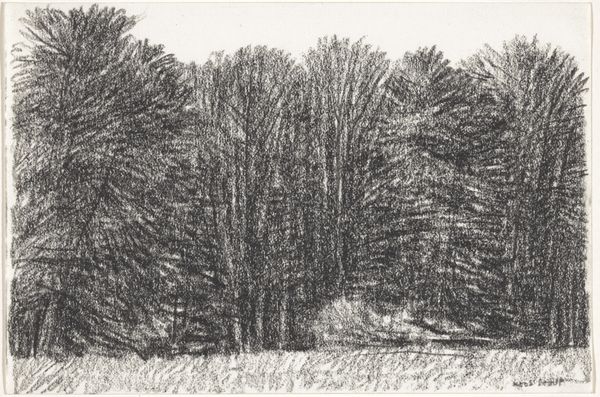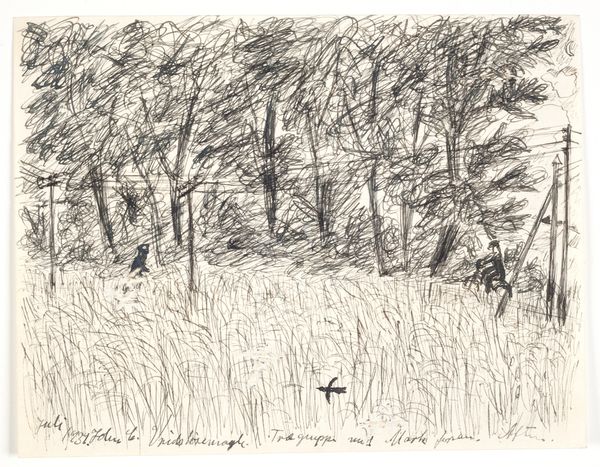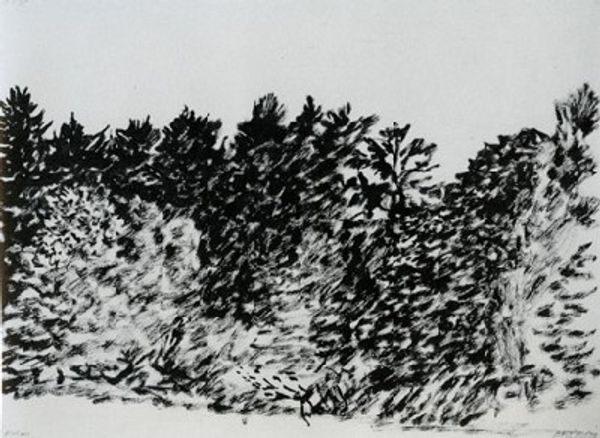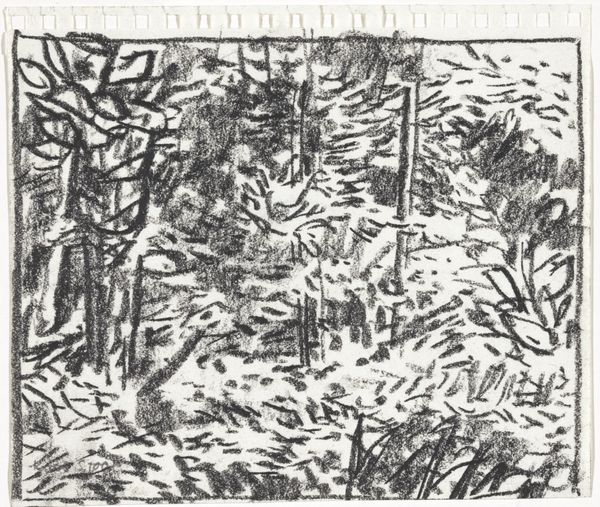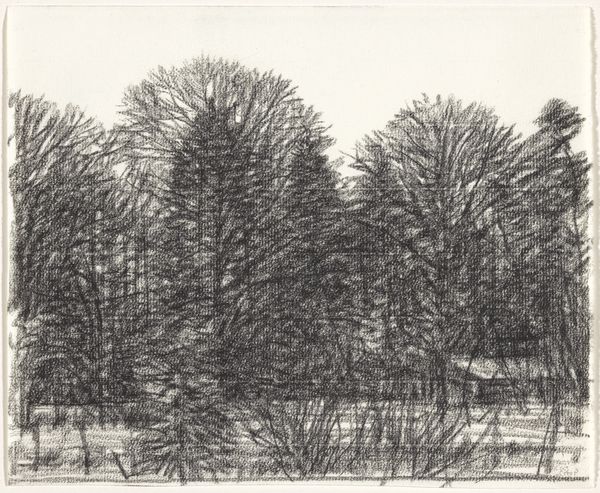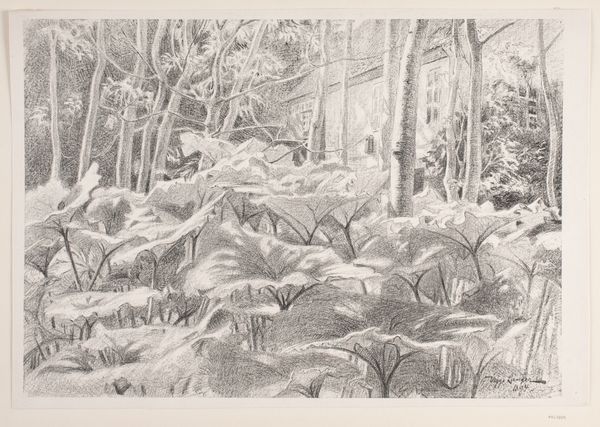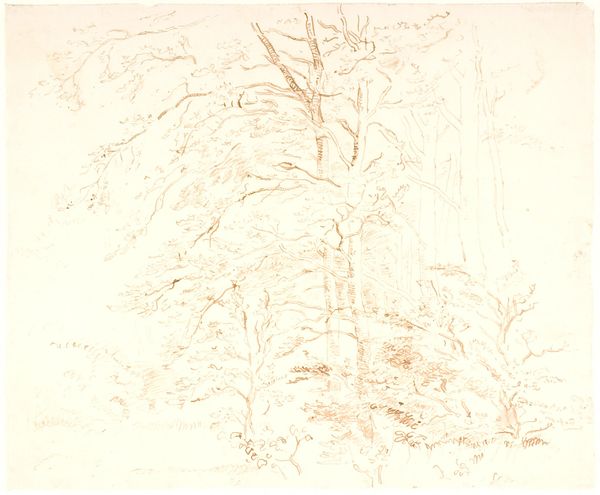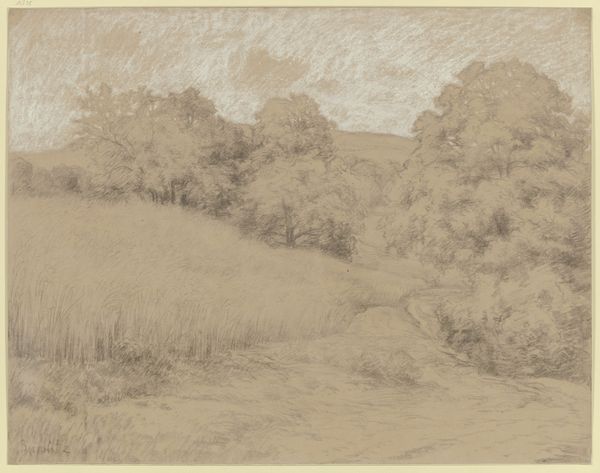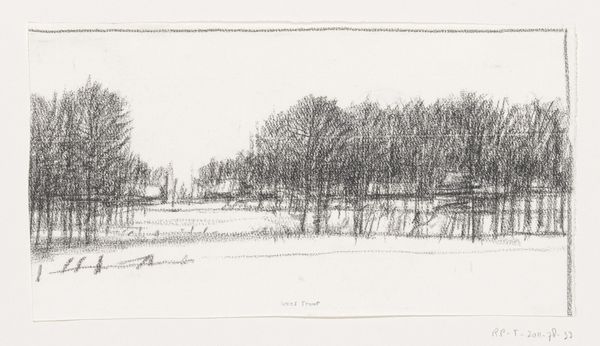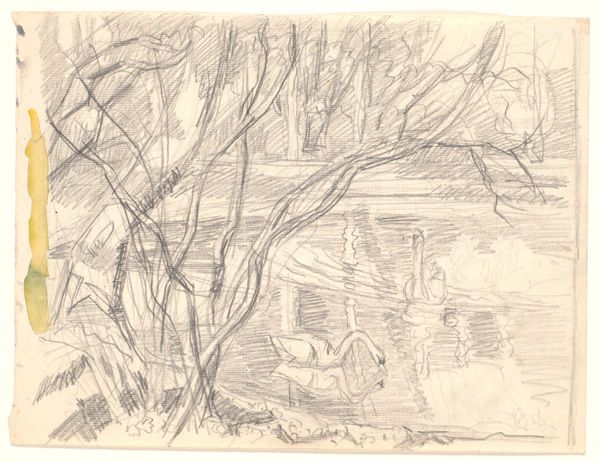
drawing, graphite
#
drawing
#
landscape
#
line
#
graphite
#
realism
#
monochrome
Dimensions: height 241 mm, width 320 mm
Copyright: Rijks Museum: Open Domain
Editor: Here we have Kees Stoop's "Blad met vier kaders waarin boslandschap," a graphite drawing created sometime between 1939 and 2009. The realism is quite striking. It feels both familiar and a bit unsettling with the four fragmented perspectives of the same woods. How do you interpret the symbols or messages embedded within this seemingly simple scene? Curator: The use of the forest is compelling, and fragmented scenes act almost like memory itself, don't you think? For centuries, the woods have served as potent symbols within the cultural landscape: a space of mystery, danger, and spiritual awakening. In folklore and fairy tales, forests are where transformations happen, where characters confront their deepest fears and find their true selves. Does the choice of rendering it in monochrome and breaking it into quadrants alter the symbolism, perhaps grounding it in lived experience? Editor: That’s a fascinating point about memory! The monochrome palette definitely lends a somber, almost dreamlike quality. The breaking up into quadrants... perhaps suggests fragmented memories or multiple perspectives on a single place, distorting any clear reading of a continuous, reliable scene. Do you see a relationship to wartime anxieties, perhaps reflecting the artist's experience during that period, given the dates? Curator: Indeed. The division could be a visual representation of a mind trying to make sense of a disrupted world. Each panel captures a specific, limited viewpoint, emphasizing the subjective nature of observation. Graphite, the medium itself, suggests the act of recording, almost like preserving a fleeting moment before it disappears. The lack of color may amplify feelings of uncertainty. Can you perceive that the seemingly placid scenes invite darker associations of nature and uncertainty in their abstraction? Editor: Absolutely, now I do. Initially, the landscape felt almost generic. Now I appreciate how those formal choices enhance the symbolism and the overall emotional impact. It’s a landscape not just seen, but experienced through a specific lens of time, place, and perhaps trauma. Curator: Precisely. Art often invites us to see beyond the immediate and consider the deeper, sometimes hidden layers of meaning embedded within familiar forms and images. Recognizing this artistic language enables the viewer to appreciate art in an intimate way.
Comments
No comments
Be the first to comment and join the conversation on the ultimate creative platform.
